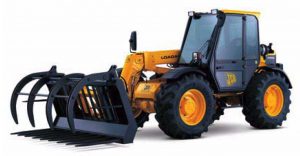
Pages from 9803-3710 – JCB Rear Engine Loadalls (526, 526S, 528-70, 528S) Service Manual
Complete workshop & service manual with electrical wiring diagrams for JCB Loadall 504B, 526, 526S, 528-70, 528S. It’s the same service manual used by dealers that guaranteed to be fully functional and intact without any missing page.
This JCB Loadall 504B, 526, 526S, 528-70, 528S service & repair manual (including maintenance, overhaul, disassembling & assembling, adjustment, tune-up, operation, inspecting, diagnostic & troubleshooting…) is divided into different sections. Each section covers a specific component or system with detailed illustrations. A table of contents is placed at the beginning of each section. Pages are easily found by category, and each page is expandable for great detail. The printer-ready PDF documents work like a charm on all kinds of devices.
FILELIST:
9803-3610U – JCB Loadall 504B, 526 Service Manual.pdf
9803-3650 – JCB Loadall 528-70 & 528S Service Manual.pdf
9803-3710 – JCB Rear Engine Loadalls (526, 526S, 528-70, 528S) Service Manual.pdf
EXCERPT:
General Information 1
Care & Safety 2
Routine Maintenance 3
Attachments A
Body & Framework B
Electrics C
Controls D
Hydraulics E
Transmission F
Brakes G
Steering H
Engine K
…
Service Manual
Rear Engine Loadalls
Section 1 – General Information
Section 2 – Care and Safety
Section 3 – Routine Maintenance
Section A – Attachments
Section B – Body and Framework
Section C – Electrics
Section E – Hydraulics
Section F – Transmission
Section G – Brakes
Section H – Steering
Section K – Engine
…
Dismantle, Inspection and Assemble
Before removing and dismantling the pump, check the output flow and pressure, see Technical Data. If the pump performance is below that specified and cannot be corrected at the relief valve, it should be renewed complete. Renewal of individual components such as gears, bearings and housing will not effect a permanent cure. If the pump output is satisfactory but there is evidence of external leakage, the pump should be removed and dismantled for re-sealing only.
Before dismantling, ensure that the exterior of the pump and the working area are thoroughly cleaned and free of possible sources of contamination.
Dismantle
1 K Fig 40. ( T E-58). Match mark the pump body 8, priority valve body 6 and mounting flange 11 to ensure correct re-assembly.
2 Hold the input drive gear 3 in a vice fitted with softjaws.
Bend back the lock-washer tabs flat and loosen the retaining nut 1.
Important: Do not hammer the pump driveshaft or the pump internal components will be damaged.
3 Using a suitable puller, remove the input gear 3.
Retain the woodruff key 4.
4 Remove the four screws 5 securing the priority valve assembly 6 to the pump body 8 and place the priority valve assembly to one side.
5 Remove the four nuts 9 and washers 10, separate the mounting flange 11 from the pump body 8 using a soft faced hammer.
6 Drift out the outer shaft seal 13, then remove the retaining circlip 14 and finally remove the inner shaft seal 15 from the mounting flange, ensuring that the shaft seal recess is not damaged.
7 Grasp the driveshaft 19 and remove complete with the driven gear assembly 20 and balance plate 16.
Mark the balance plate to ensure correct refitment.
Note: Further dismantling of the driveshaft gear and driven gear assemblies 19 and 20 is not recommended.
…